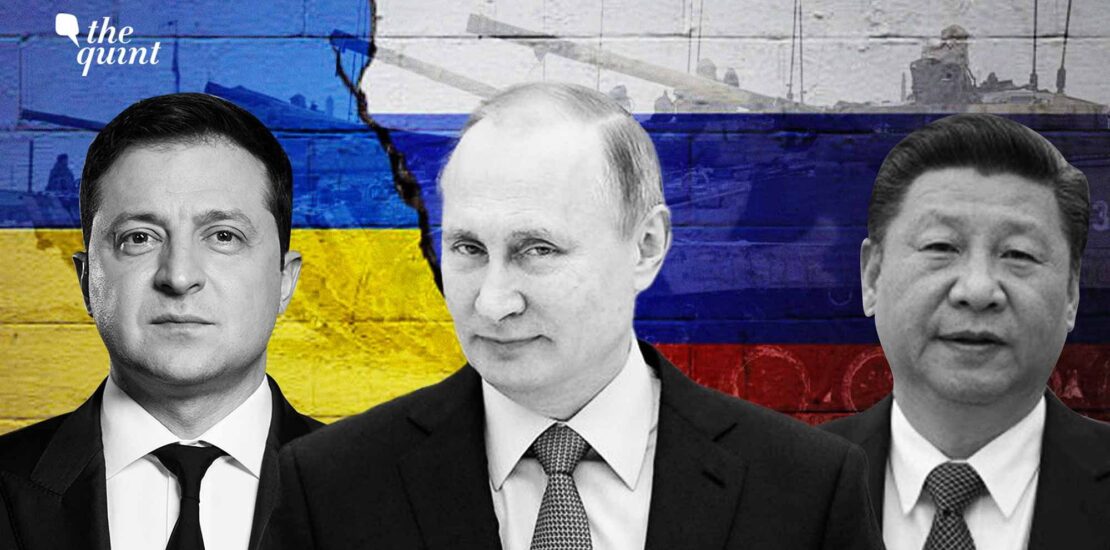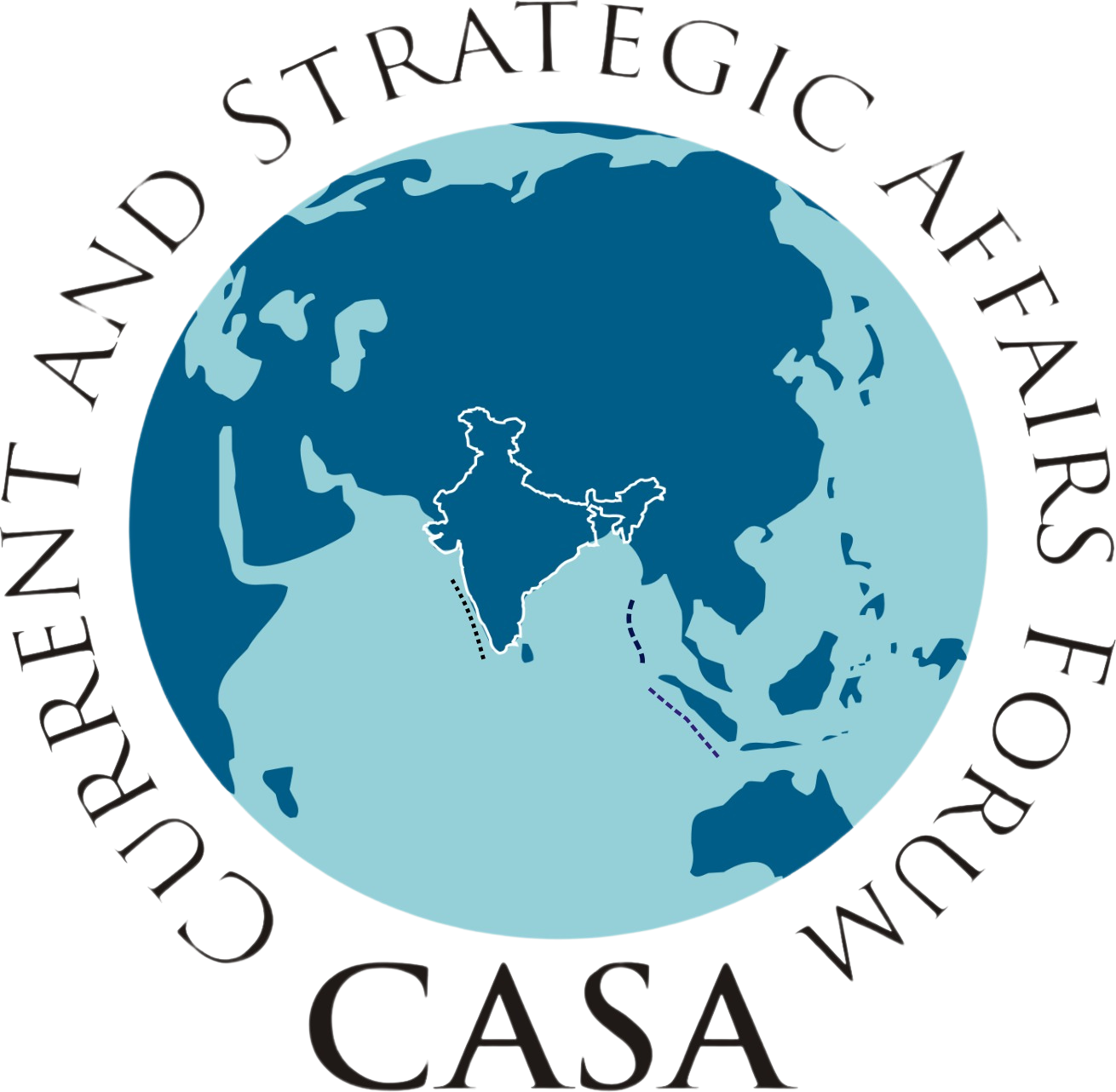China Could Use Invasion of Ukraine to Bring Europe & Russia on Same Page
- March 1, 2022
- Posted by: admin
- Categories: China, Europe, India, Russia, Ukraine

By: DR TARA KARTHA
China is the biggest trading partner of both Ukraine and Russia.
Russia on Saturday, 26 February, used its veto powers to block a United Nations Security Council (UNSC) resolution condemning the ongoing invasion of Ukraine and demanding an immediate withdrawal of troops from the nation. However, China seemed to be still sitting on the fence.
11 countries voted in favour of the US-sponsored resolution and the debate and subsequent voting were significant, as proof of the strong opposition to Russian President Vladimir Putin’s invasion of Ukraine on Thursday, 24 February.
However, even while a virtual storm of anger sweeps most world capitals after Russia’s audacious attack, the foreign ministry in Beijing is sitting somewhat precariously In response to a direct question, the foreign ministry’s spokesperson simply reiterated the need to exercise restraint, a line that could have come straight from Delhi.
Thereafter, however, the press conference was interesting, in that it was essentially a railing against the US and its policies, together with a charge of a wide-ranging US cyber attack on various countries including China and India. Interesting, to say the least.
The Chinese POV
China has long supported the Russian view that the eastward expansion of NATO was detrimental to “lasting peace and stability” in Europe, and accused the West of hyping up the war. This much was said by the spokesperson just before Russian action commenced.
The NATO issue was also part of the joint statement given by Russia and China earlier, which ironically also had some heavy language on commitment to “peaceful coexistence” of both parties. Clearly Beijing – together with much of the world – had not expected Moscow to take such a risk, and took Russian denials of any intent to invade as reliable.
At the UN Security Council emergency session, China’s permanent representative chose to highlight the “historical context,” even while committing to the principle of “safeguarding sovereignty and territorial integrity.”
He also promised to promote peace talks “in its own ways.” Thereafter, the Chinese position took a definite tilt towards Russia by the day, pointing out that despite “as many as 3,800 sanctions designations, which means wielding the stick of sanctions three times per day on average,” these had achieved nothing, and that these should not harm “legitimate” rights and interests of China.
By the next media briefing, China’s pet stooge Global Times asked a clearly positioned question on an alleged US cyber spying against some nine countries including Russia, China, and interestingly, both India and Australia, pointing out gleefully, that the US did not even spare its ‘Quad’ members.
So far, therefore, China has used the Ukraine operation to throw mud at Washington, and provide a guarded support to Russia. It has nothing to lose with this position, and probably much to gain as the US attention is diverted away from China now.
China’s Peace With a Parenthesis
But this position has not worked entirely to Beijing’s benefit. In his briefing on 23 February, US State Department Spokesperson Ned Price said that China, and every “responsible state,” had an obligation to use any influence it has “to incentivise, to advocate for Vladimir Putin to back down, for the Russian Federation to de-escalate.”
Price went on to state that the joint statement was indicative of the relationship where both Russia and China wanted a world order that was “profoundly illiberal.” But the point was clear. Beijing had to intercede with Russia if it was indeed such a profound partner.
The spokesperson’s response was not only to evoke China’s colonisation, the US’ “ganging up” against others, and the observation that “China remains the only permanent member of the Security Council that has yet to realise complete national reunification.”
In the event, Chinese President Xi Jinping did speak to Putin, with a carefully-balanced approach that while rejecting the “Cold War mentality” and supporting “reasonable security concerns” of all, nonetheless “supports Russia in resolving the issue through negotiation with Ukraine” and a balanced European security mechanism.
The Economics of Competition
China is Ukraine’s biggest trading partner. According to the State Statistics Service of Ukraine, in 2020, the trade turnover between Ukraine and China amounted to $15.4 billion, exports of goods from Ukraine to China increasing considerably to $7.1 billion, imports of Chinese goods to Ukraine amounted to $8.3 billion.
Ukraine tried to use its China card to leverage a better deal from the US, which may account for the unprecedented seizing by the Ukrainian state of the assets and shares of Motor Sich, the world’s largest producer of aircraft engines early last year. This was followed by Ukraine moving legislation to restrict foreign investment in sensitive sectors including defence. However, a great many Chinese companies continue to operate as part of the Belt and Road Initiative that Kyiv signed to.
China is also Russia’s biggest trade partner. Trade between China and Russia reached a record high of $146.9 billion in 2021, up 35.8 percent year-on-year, according to China’s customs agency. China’s imports from Russia exceeded exports by more than $10 billion. While China has notched up a huge rise in its share of global trade to 15 per cent, and Russia with just about 1.49 of world exports, the two cannot match up to the sum of G-7 economies in terms of share of totals which is at 45.8 percent. However, this assumes that all of these will be able to sidestep the Chinese and Russian reach.
Already refusal of Italy’s luxury goods producers and Belgium’s diamond manufacturers to be part of the sanctions regime, shows the first wedge. Dividing the world into two sanctions regimes is likely to be no easy task.
Meanwhile for India, the Chinese espousing of territorial integrity and sovereignty is ironic, given its constant push not just in Ladakh but also along the rest of the border. While India’s interest in retaining India as a reasonable ‘pole’ in international relations is clear, it is less certain what Beijing wants.
A revived strong Russia that can take back its space in Central Asia and elsewhere is hardly likely to deliver on Chinese ambitions. However, nor is a weak and dangerously unstable Russia likely to add to China’s security in its West. So China will use this incident – and it’s no more than that for Beijing – to get Europe and Russia on the same page, while pointing out that following a US line is detrimental to its well being. That’s something that many in France and Germany are already convinced of.
India has seen a brutal salami slicing in Ladakh. Europe is now going to get the same strategy in diplomatic terms and backed by a large purse. This should be interesting.
(Dr Tara Kartha is a Distinguished Fellow at the Institute of Peace and Conflict Studies (IPCS). She tweets @kartha_tara.
